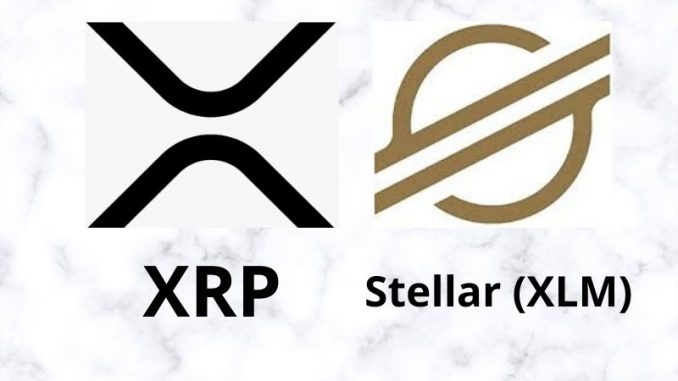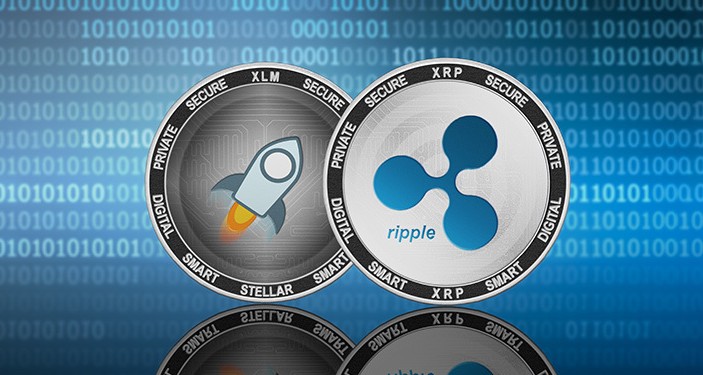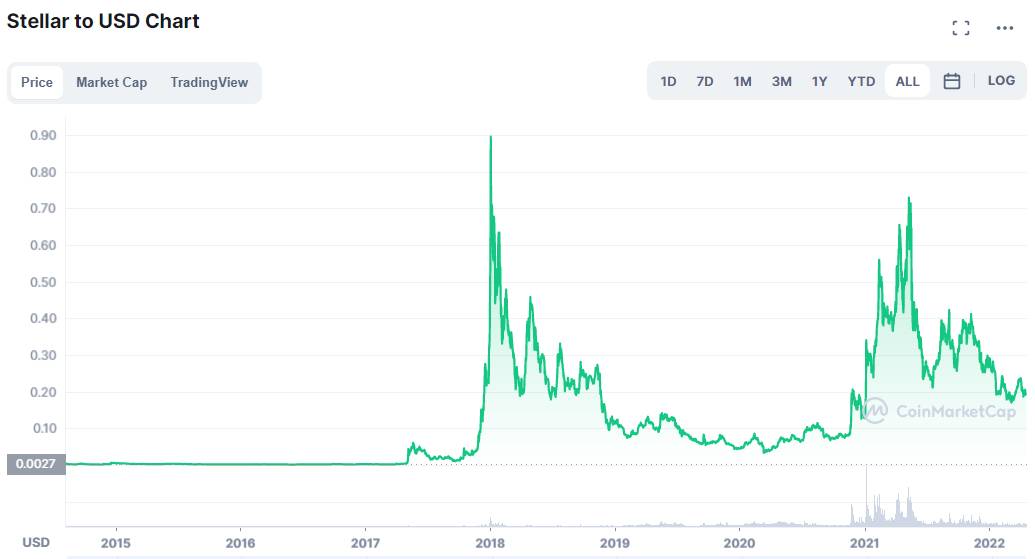
Ripple is often compared to Stellar like David is compared to Goliath. Both cryptocurrencies were created by the same person, Jed McCaleb.
Although both Stellar (XLM) and Ripple (XRP) have a similar goal of facilitating cross-border transactions, they are based on different principles.
But which to choose, Stellar or Ripple? Which is better for investors?
The Stellar network is an incredibly powerful platform that connects people, payment systems and banks, enabling the transfer of money between parties. Stellar (Lumens), a decentralized blockchain, processes payments and money transfers much faster than traditional banking systems.
The transaction verification system consists of selected nodes responsible for giving the green light to your transaction, which happens within seconds. In addition, the fees for these transactions are much lower.
For example: the average transaction confirmation time for Bitcoin is 1 hour, for Ethereum it is 15 minutes. For Lumens, the average transaction confirmation time is 3 seconds.
Just like Stellar, Ripple is a blockchain technology that acts as a cryptocurrency and as a payment network. It is currently considered one of the most reliable and secure ways to transfer money and provide liquidity as needed. Because there is no need for a central intermediary, XRP transfers (the token used in the Ripple network) are convenient and easy.
Ripple uses a tool called a “gateway” to create trust in transactions by sending the requested amount to publicly available addresses on the Ripple network. Anyone interested in making payments on the Ripple network technically has to open the gateway to exchange money with others. Ripple uses a peer-to-peer consensus mechanism, which ensures Ripple’s high security
Applications of Stellar and Ripple

The main difference between Stellar and Ripple is that both cryptocurrencies have different target audiences. Ripple, for example, is particularly interesting to large markets with huge profit potential, such as banks. This explains why XRP is centralized.
Rather, Stellar calls itself a “non-profit organization.” Stellar’s goal is to provide financial services even to people around the world, even if they don’t have access to banking services. Lumens was created to help users, not to make money from them.
Also, Ripple and Stellar use different algorithms. Lumens has a unique consensus protocol, while Ripple uses a truth proof algorithm. XLM (Lumens) is deflationary and XRP is inflationary. Thus, XRP increases the number of coins in circulation, while XLM, on the contrary, decreases it.
XLM and XRP exchange rate dynamics: factors and prospects
XLM experienced a dizzying rise between April 2017 and January 2018, rising from $0.004 to $0.89 in a few months. This is currently its all-time high. Lumens has long been predicted to soar above $1, but so far those predictions have not materialized. In May 2021, Lumens rose to another peak of $0.71 amid the rise of Bitcoin, but in April 2022 it trades at just $0.2. Does this mean that the hopes for Stellar’s bright prospects have been misguided? For now, it’s premature to say so.

During its history, Stellar has managed to conclude quite a few successful partnership agreements with major companies, the most famous of which is the one with IBM. The important fact is that interest in the platform is constant, because the technology allows the implementation of a very wide range of projects in the financial sector. For example, the Ukrainian government has recently announced plans to issue a digital hryvnia on the Stellar platform.
Now, while the rate of Lumens is quite low, it may be the most profitable time to buy it.
XRP is showing more stability than Lumens. Right now, Ripple is trading at $0.78. By comparison, at the time the crypto took off in May 2021, XRP was at $1.83. That is, XRP has fallen 2.3 times since then, but Lumen has fallen much more significantly – 3.5 times.

An important factor affecting XRP’s value (in addition to the overall cryptocurrency market environment) is the progress of the lawsuit with the SEC. Recall that Ripple has been accused by the SEC of illegal securities trading, and if the court ruling is not in its favor, it will likely end the existence of this cryptocurrency. However, Ripple has a good chance of winning this trial. For example, former SEC official Joseph Hall believes so. If Ripple wins in court, it is likely that the price of XRP will skyrocket.
Conclusion
We learned that both Lumens and XRP focus on cryptocurrency transfers, also both cryptocurrencies are quite popular. So, which is better for investors?
Lumens is for everyone, but Ripple is more suitable for corporate companies, governments, banks and similar institutions. The fact that Stellar is deflationary means that the price of XLM will rise in the long run. While the inflationary nature of Ripple also means that there will always be more XRP on the market, the price of XRP can generally rise significantly if Ripple’s central company is successful
Overall, there are factors that support the optimism of both leading cryptocurrencies. Most likely, for investors, XRP and Lumens are equally good, and it makes sense to invest in both cryptocurrencies.